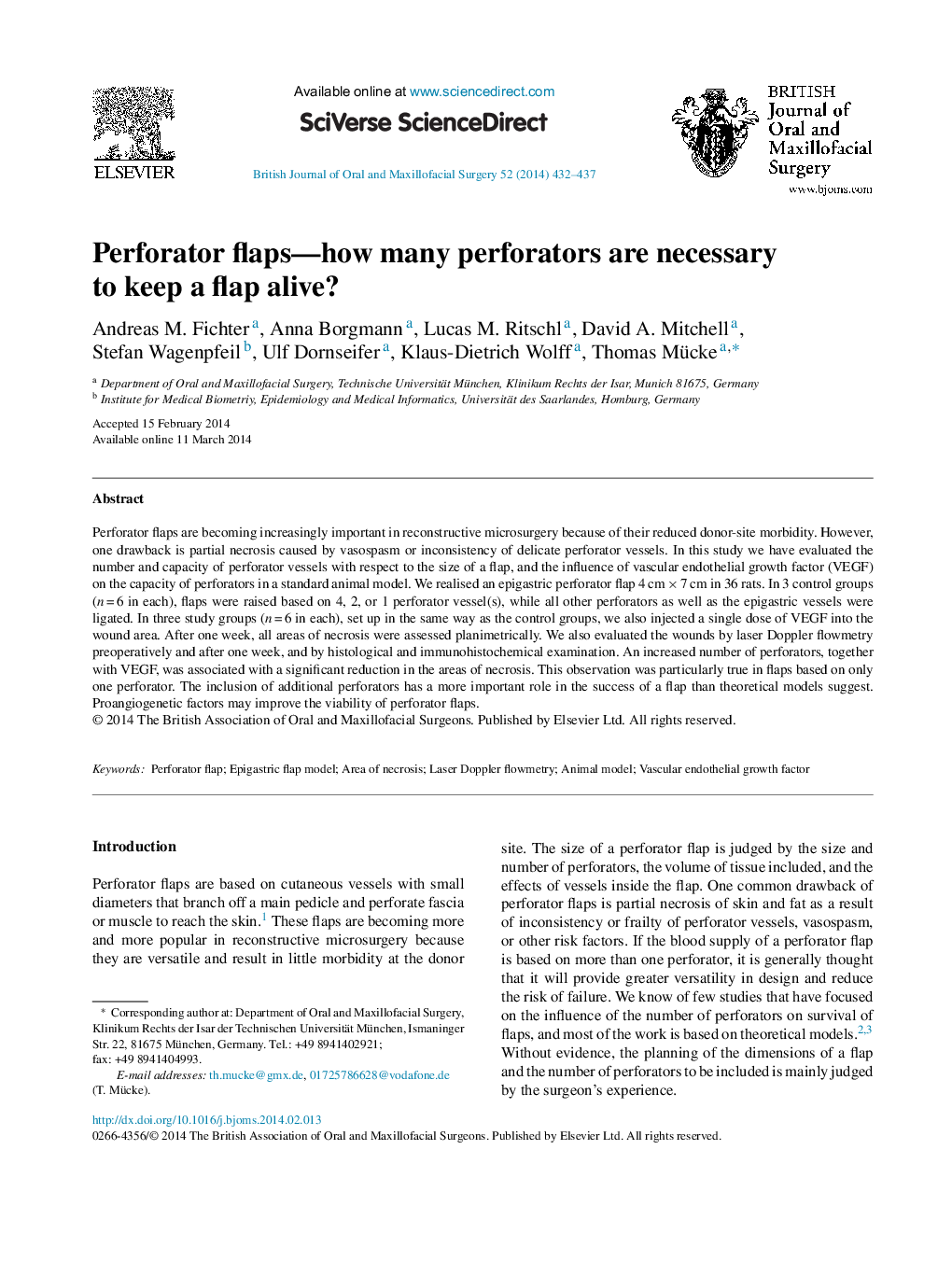| Article ID | Journal | Published Year | Pages | File Type |
|---|---|---|---|---|
| 6052251 | British Journal of Oral and Maxillofacial Surgery | 2014 | 6 Pages |
Abstract
Perforator flaps are becoming increasingly important in reconstructive microsurgery because of their reduced donor-site morbidity. However, one drawback is partial necrosis caused by vasospasm or inconsistency of delicate perforator vessels. In this study we have evaluated the number and capacity of perforator vessels with respect to the size of a flap, and the influence of vascular endothelial growth factor (VEGF) on the capacity of perforators in a standard animal model. We realised an epigastric perforator flap 4 cm Ã 7 cm in 36 rats. In 3 control groups (n = 6 in each), flaps were raised based on 4, 2, or 1 perforator vessel(s), while all other perforators as well as the epigastric vessels were ligated. In three study groups (n = 6 in each), set up in the same way as the control groups, we also injected a single dose of VEGF into the wound area. After one week, all areas of necrosis were assessed planimetrically. We also evaluated the wounds by laser Doppler flowmetry preoperatively and after one week, and by histological and immunohistochemical examination. An increased number of perforators, together with VEGF, was associated with a significant reduction in the areas of necrosis. This observation was particularly true in flaps based on only one perforator. The inclusion of additional perforators has a more important role in the success of a flap than theoretical models suggest. Proangiogenetic factors may improve the viability of perforator flaps.
Related Topics
Health Sciences
Medicine and Dentistry
Dentistry, Oral Surgery and Medicine
Authors
Andreas M. Fichter, Anna Borgmann, Lucas M. Ritschl, David A. Mitchell, Stefan Wagenpfeil, Ulf Dornseifer, Klaus-Dietrich Wolff, Thomas Mücke,
